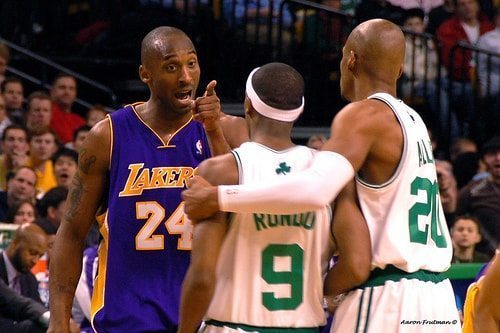Is conflict in a team good?
Leaders often worry about conflict. The two frequent responses, hence – when they encounter one in their teams is:
- To try and play mediator or
- Ignore it and wait till the time it subsides or fades away
Source: Flickr
Either one though, may not be the best course of action. A leader who tries to play mediator at all times will increasingly find himself playing Judge – not the best use of his time. Also doing so, denies the team the challenge of working out their own differences and perpetually keeps them in an artificial-support mode. On the other hand, hoping that with time people will forget the issue and harmony will be restored, is quite akin to keeping fingers crossed, hoping for the best!
What then is the best course of action? A wise leader is one who realises that conflict is not the enemy of collaboration, on the contrary it is perhaps a necessary condition for productive and successful collaboration. He realises that what he needs from his team is not a harmonious group of yes-men, but a group of people who are able to challenge each other, thrash out the differences and the conflicting points of view – and finally arrive at much more robust decisions. That is the maturity in a team that every leader should aspire towards.
What then should a leader do to lead his team towards these twin objectives of:
- Creating a psychologically safe environment for the team to share conflicting opinions?
- Encouraging the emotional intelligence of individual team members, such that they appreciate the importance of first listening to differing viewpoints, before evaluating and arriving at a converging consensus?
The benefits from meeting these objectives, for a team can be quite spectacular. When ideas are debated rigorously, one idea often leads up to another, gets thoroughly debated and eventually leads up to better decisions or solutions.
Source: Pixabay
Creating such a culture requires the leader to focus on three things:
a) Manage Emotions
b) Inspire Trust
c) Be creative in making the team work closely
Manage Emotions: Communication between people and hence within teams often gets muddled up due to the emotions involved. In their path breaking book, Getting to YES, authors Ury, Fisher & Patton show us the path: “Always separate the people from the problem” they say. Perception is reality. In corporate environments where stakes are high, any conflicting opinion is often seen as an attempt by another member to belittle. This in turn leads up to raging emotions that often threaten to derail discussions or leaves people with bruised egos.
A few guiding lights that a leader could coach his team on, to help manage this situation are:
- Actively look at a situation/ problem/ issue from the other persons point of view
- In any team discussion, be aware of emotions – yours as well as anothers
- Be an active listener
- Speak with the intention to be understood – not just to state.
- Don’t react to emotional outbursts – give people time to cool off or back off emotionally
- Focus your talk on yourself, not the other person. (Hence better to say, “This is how I feel about this”, rather than “This is what you should be doing because….”)
Inspire Trust – When trust is low, people hold back and refrain from discussing openly which in turn cut down on the teams’ ability to solve problems effectively. Trust which is an essential ingredient can only be earned and cannot be mandated. Thus it becomes the utmost responsibility of the leader to create a culture of trust in the team, where people feel psychologically safe to openly discuss issues.
Arriving at this point of trust within teams though takes time and effort. A few things a leader could do to inspire trust within his team are:
- Investing in team building programs that give the team an opportunity to engage informally with each other and know each other better.
- Put himself on the line by openly discussing his own vulnerabilities & hence encouraging his team members to do so too.
- Clearly establishing team norms that encourages openness, so that team members are comfortable in sharing not just ideas but also problems they face, without the fear of reprisal.
Being creative in making the team work closely – When people work together closely, it generally increases cohesion. They share information, look at alternative options and take decisions together and in this process they get to know each other much beyond being just a colleague or team mate. And when conflict arises in such a cohesive team, chances are they will give the benefit of doubt to each other – by genuinely trying to understand each other’s differing point of view.
Leaders hence need to find creative ways for team members to work together. A few easy ways for leaders to do this could be:
- By ensuring that most of the information in a team is shared freely with all.
- By seeking input from all the team members on critical issues affecting them, hence making them feel a part of the team’s collective destiny.
- Leaning more towards team based rewards rather than one that solely appreciates individual contributions. This will help mitigate individual one-upmanship since everyone is then working towards the common goal & rewards.
By managing conflict effectively, collaboration within a team is naturally enhanced. Are you managing your workplace conflict effectively, Do share your thoughts.


